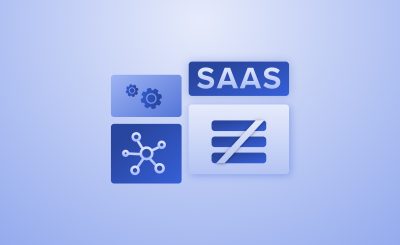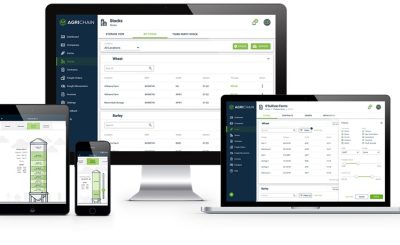Digital accessibility aims to ensure that everyone has access to the wealth of online resources and services, irrespective of their physical capabilities or restrictions. Understanding that not everyone utilizes digital goods and services in the same way—or at all—is crucial. Some folks seldom ever use them. For example, a blind person would utilize a screen reader, whereas a person with a learning disability might require the information to be presented in an easier-to-understand manner.
What steps can you take to ensure that your digital content and services are accessible is the question at hand. The following points should be remembered:
Make Sure Your Content is Simple to Understand
Make sure your writing is simple to understand. Although it may seem like a statement of the obvious, it bears repeating. This entails refraining from using jargon and sticking to straightforward English. It also entails providing your content in numerous formats, such as audio or video, for users who choose to consume it that way or need to do so in order to meet a particular demand.
Use Images and Videos Effectively
Both the appeal and readability of your content can be improved with the use of images and videos. However, they must be used extremely cautiously to prevent generating accessibility issues. Always make sure to provide text equivalents for things like photographs and videos, for example, so that people who cannot access them can still grasp the material. Additionally, make sure that your still photos and videos have enough contrast so that those with vision impairments can see them.
Give Priority to Accessibility
The most reliable way to ensure that your digital products and services are useable by people with disabilities is to design them with accessibility in mind from the very beginning. This necessitates considering accessibility at every stage of the design process, from user research to prototyping to actual product code. Furthermore, it necessitates collaboration with accessibility specialists to guarantee that the designs you produce are as user-friendly as is reasonably possible.
Please Do Accessibility Checks
You should still put your products and services through usability testing to ensure that they can be used, even if they were created with accessibility in mind from the start. This necessitates the employment of a wide range of testing techniques and procedures, including automated accessibility testing tools and manual testing by individuals with disabilities.
Continue to Keep Up with Current Accessibility Laws and Standards
Several laws and regulations, most notably version 2.0 of the Web Content Accessibility Guidelines, require accessibility (WCAG). These laws and rules are being adopted by an increasing number of countries in an effort to harmonize their practices. Because of this, it’s crucial to stay informed about the most recent changes in order to ensure that your products and services comply with the law.
You might find these guidelines helpful as you work to provide content that anybody can interact with and use!
The Valuable Advantages of Digital Accessibility
Disability is “an umbrella term that encompasses impairments, activity constraints, and participation restrictions,” according to the World Health Organization. Disabilities can result from issues with physical, sensory, cognitive, intellectual, and behavioral health. One of the most common medical conditions worldwide, it is estimated that one billion people have a disability. Even yet, it may be challenging for those with impairments to obtain services like employment and education. One strategy for addressing these concerns is to make digital material and services accessible to everyone. To achieve this, it is necessary to create websites and software that can be used by a wide range of disabled people, including those who are blind or have low vision, deaf or have hearing loss, and have cognitive or intellectual disabilities. By removing some of the barriers that people with disabilities face and enhancing the accessibility of digital content and services, we can enable them to lead full, inclusive lives.
How The Disabled Community Uses Digital Content to Navigate
There are many obstacles for people with different disabilities while navigating digital content. Screen reader software may be required to transform text to speech for people with poor or no eyesight. For people who are hard of hearing or deaf, accessing audio and video content may call for captions or transcripts. Content may need to be clarified for those with cognitive limitations. People who are physically limited could also need content that can be accessed through different input methods, including switches or eye-gaze sensors. By taking into account these various needs, website designers and developers may provide digital content that is accessible to a wider audience.
designing with the blind in mind
It is important to remember that not everyone interacts with the environment in the same way when it comes to digital information. For instance, those with poor or no vision must rely on a variety of cues to process information. There are various safety measures that must be performed before providing them with digital content. For instance, every images must have alternate text captions. Videos also need closed captioning and audio explanations. You may make sure that everyone has access to your digital information by implementing these procedures.
Designing With Deaf People in Mind
It is crucial to consider the demands of all potential audiences when creating digital content. This includes people with disabilities who might find it challenging to consume traditional forms of material. Digital content can be made accessible to hearing-impaired and deaf people through closed captioning.
When producing digital content with closed captioning, several things need to be taken into account. The captions should, first and foremost, be readable and clear. This entails using a large font size and staying away from elaborately designed typefaces that could be challenging to read. Second, the captions and audio ought to be in time. The audio track can be manually transcribed using software that creates automatic subtitles, or the captions can be manually written. Finally, it’s critical to thoroughly check the captions for errors.
You can make digital content that is usable by people of all abilities by following these guidelines. You can make your content more accessible by using closed captions; additional options include audio description and sign language interpretation. By taking into account the needs of various audiences, you may create digital content that can be appreciated by everyone.
Making Materials For People With Cognitive Impairments
Numerous considerations must be made when creating digital content for people with cognitive disabilities. First and foremost, it’s critical to recognize that each person is unique and requires a different approach. There are a few general principles that might be adhered to in order to make information more accessible. For instance, disability services promote the use of straightforward language and visuals. By removing any misunderstanding, this might aid the reader in understanding the content. Additionally, there should be plenty of opportunities for debate and critique. This increases the likelihood that the reader will understand and retain the information by allowing them to relate to it on their own terms. These guidelines will assist designers in producing digital material that is both beneficial and available to all customers.
Find out how we can assist you in producing the best digital content with accessibility at the forefront of your design by visiting www.qualitylogic.com.








